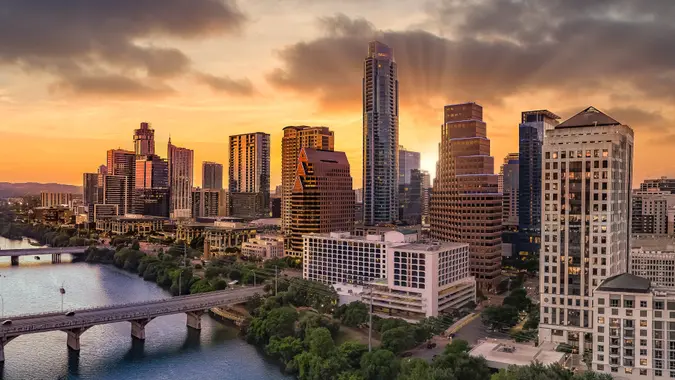How Big Is the Average Social Security Check of a Lower-Income Retiree?

Commitment to Our Readers
GOBankingRates' editorial team is committed to bringing you unbiased reviews and information. We use data-driven methodologies to evaluate financial products and services - our reviews and ratings are not influenced by advertisers. You can read more about our editorial guidelines and our products and services review methodology.

20 Years
Helping You Live Richer

Reviewed
by Experts

Trusted by
Millions of Readers
Income gaps in the working world continue once you start collecting Social Security retirement benefits, although on a smaller scale.
Benefits are based on the amount of money you earn during your career. The higher your earnings, the higher your retirement check. Similarly, Americans in the lower-income classes will also get lower-than-average Social Security benefits.
4 Low-Risk Ways To Build Your Retirement Savings in 2025
One thing about Social Security is that it’s not an “entitlement” program, even though some people like to call it that. It operates more like a government-run pension program. You aren’t “entitled” to Social Security retirement benefits — you earn them by working a certain number of years and paying into the system through payroll taxes.
You need at least 10 years of work, or 40 credits, to qualify for Social Security retirement benefits, according to the Social Security Administration. Benefits are based on average indexed monthly earnings for up to 35 full working years. The highest-earning 35 years are used in the calculation.
If you work the full 35 years, you can maximize your Social Security check. If you work fewer than 35 years, your benefit won’t be as much — regardless of how much you earned during your career. A “zero” on your earnings record could put a big dent in your benefits if you worked less than 35 years. That’s because the zero will drag down your average index monthly earnings.
Americans who earn lower-income wages while working will naturally get a lower Social Security check once they retire. As of March 2024, the average retirement benefit was $1,864.52 a month, according to the Social Security Administration. The maximum payout for Social Security recipients in 2024 is $4,873 a month, and you can only get that by earning a very high salary over 35 years.
The SSA does not track average benefits by income group. However, the Center on Budget and Policy Priorities conducted an analysis last year that looked at average Social Security benefits by income class.
According to that analysis, the average yearly Social Security benefit is $14,824 for a low earner (earning 45% of the average wage) retiring at age 65. That comes out to a monthly average of $1,235 a month — or roughly two-thirds of the average benefit overall.
A special minimum Social Security benefit was created in 1972 to benefit low-income workers. To qualify, you must have at least 11 years of Social Security coverage, according to the SSA. A year of coverage is any year a worker pays a “significant amount” to the Social Security Trust Fund, SmartAsset reported.
The SSA website provides a table breaking down special minimum benefits. The table refers to “maximum family benefits” based on the primary insurance amount (PIA), which is the benefit you would get if you elect to begin receiving retirement benefits at your full retirement age.
To get the full special minimum PIA, workers must have at least 30 years of coverage. As of 2023, the maximum family benefit for Social Security recipients who qualify for the special minimum benefit ranges from $77.80 to $1,281.80 monthly.
Another thing to remember is that your Social Security check is also determined by when you decide to start claiming benefits. You can file for Social Security as early as 62, but your payment will be lower than if you waited until later. You get the full benefit you are due at full retirement age and the highest possible benefit at age 70.
More From GOBankingRates
 Written by
Written by  Edited by
Edited by 
























